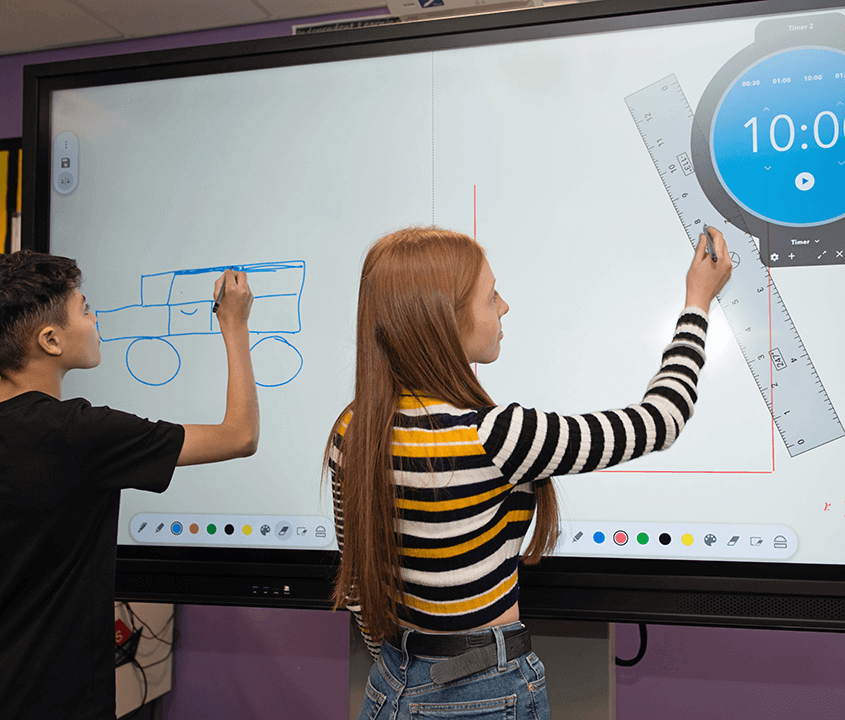By Morgan Crutchfield, Promethean Education Consultant
During the 1990’s educators and instructional gurus knew that as the 21st century approached, technology was becoming more accessible to our students in their day-to-day activities. As we entered the 21st century, the generation known as “the millennials” replaced the former generation. The new 21st-century learner used technology at an unprecedented rate. Educational theorists knew we had a huge task, and that was to keep our new learners engaged in the classroom with similar technology that they used in their leisure time, or else they would grow increasingly bored and disengaged in their learning. Not only did the 21st-century learner bring a new culture of students, it also brought a new culture of learning. In the race to meet the needs of these learners, cutting edge instructional technology was developed to assist teachers in facilitating teaching and learning in the classroom. Traditional chalkboards and dry-erase whiteboards were replaced with interactive whiteboards.
The Introduction of the Interactive Whiteboard
With the introduction of the interactive whiteboard, 21st-century teaching finally began to accommodate 21st-century learning. Interactive whiteboards (or interactive screens as they’re known) are front-of-the -classroom technology where students and teachers can engage with Web 2.0 tools such as apps, websites, and creative platforms. This new classroom technology can either be operated using an overhead projector with a connected laptop/computer or by accessing it through the even more innovative and cutting-edge technology, an interactive panel. An interactive whiteboard has many functionalities. In previous years, the interactive whiteboard could only be activated using an overhead projector and a connected computer. In this model, users were able to mirror their connected displays onto the interactive whiteboard. As whiteboard technology progressed, users were then able to use their fingers and interactive pens on the whiteboard to control the connected PC. Fingers and Pens were used to annotate, write, draw, open documents, and search the world-wide-web. So, just imagine going from using a chalkboard or dry-erase board to having the teacher’s computer displayed in front of the classroom with the options to discover, create, share, and collaborate.
Interactive Displays for Education – the Evolution of Interactive Whiteboards
Companies, such as Promethean, have taken the interactive whiteboard experience even further to keep up with the advancement in modern technology. They have introduced an interactive display. Promethean’s newest and latest interactive displays for schools do not require an overhead projector, nor does it require a connected computer. It also has a built-in interactive whiteboard app, along with many other apps, innate to the display. Like its predecessor, the interactive whiteboard, users can do the following:
- Optimize Teaching and Learning through collaboration
- Access applications and the world wide web
- Motivate students to demonstrate their learning
- Explore Artifacts pertaining to lessons
- Provide users with a canvas to create concept maps
- Provide teachers with a front of the classroom technology that allows them to not be bound to a desk and utilize proximity
As a former classroom teacher, I utilized the interactive whiteboard daily, and its ease of use is what motivated my students to utilize it also. My peers were able to plan lessons more effectively than ever before because they were now able to incorporate websites, online articles & textbooks, and even access software, such as ActivInspire lesson delivery software (interactive flipcharts). Teachers were able to assess students’ learning through quick polls that were accessed on students’ mobile devices and have the whole group view the answers to the polls or short assessments on the interactive whiteboard. Students were excited that they could use educational apps and play games as they do at home. Finally, we felt that we were getting closer to functioning in a 21st Century Classroom.
As an Education Consultant, I have had the pleasure of visiting schools all throughout America. The schools had one commonality, all the classrooms either had an interactive whiteboard or interactive display in it. Most schools were beginning to phase out their interactive whiteboards and opting to replace them with the ‘tetherless’ interactive displays (such as the Promethean ActivPanel interactive display). Whatever the choice, whether interactive whiteboards or interactive displays, teachers all agree that students are now able to facilitate their own learning utilizing these technologies.

